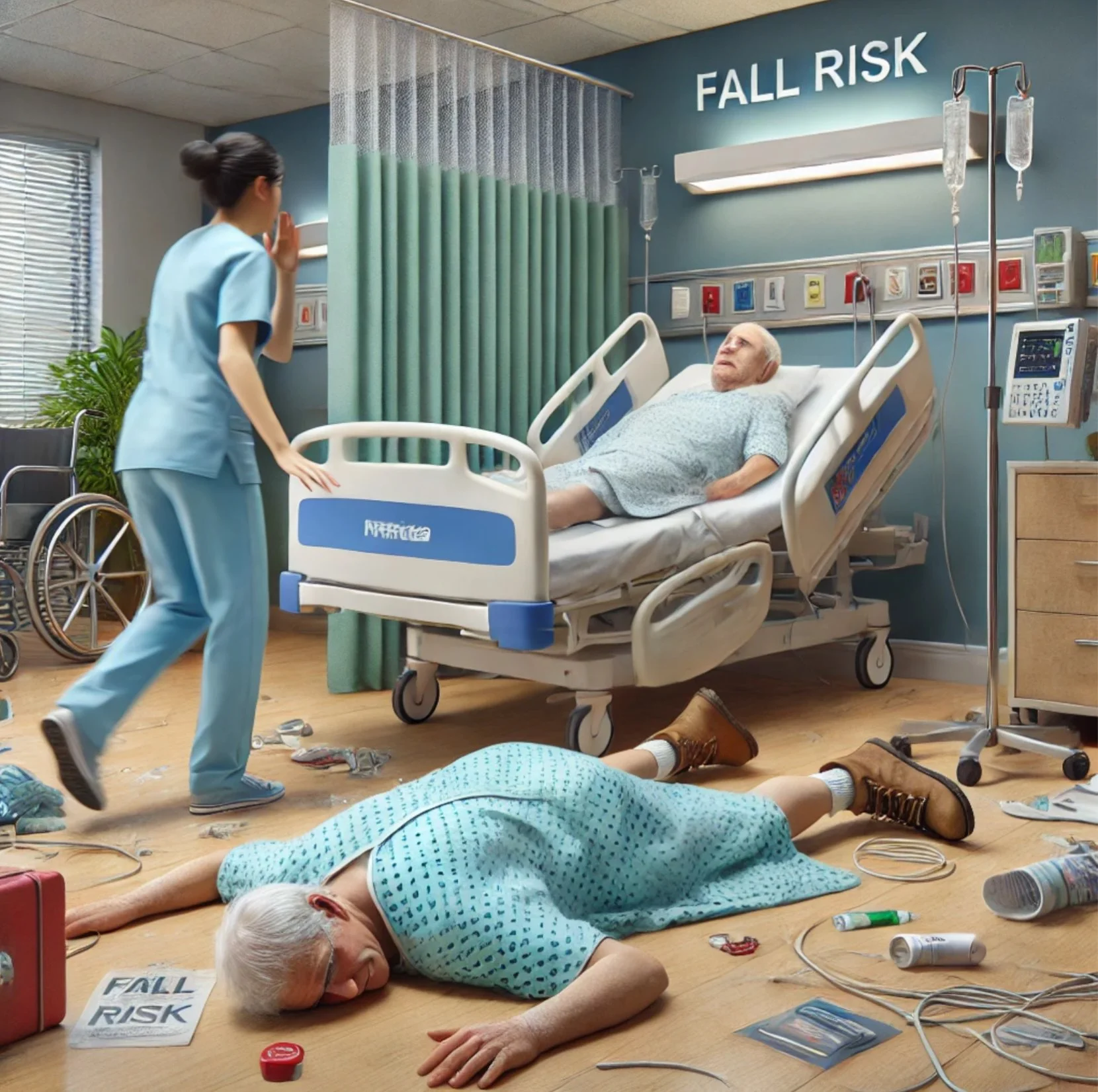Fall and Injury Prevention in Healthcare Setting: Free NCLEX-RN resource
Falls are among the most common causes of injuries in healthcare settings, affecting patients, families, and healthcare workers. Implementing effective fall and injury prevention strategies ensures patient safety, reduces healthcare costs, and improves overall care quality.
Risk Factors for Falls in Healthcare
Patient-related risks:
A. Age-related changes (frailty, poor balance, muscle weakness)
B. Cognitive impairment (dementia, delirium)
C. Medication side effects (sedatives, antihypertensives)
D. Post-surgical or mobility limitations
E. Vision impairments
Environmental risks:
A. Slippery floors or poor lighting
B. Cluttered hallways and patient rooms (Tripping hazards)
C. Improper bed height or lack of grab bars
D. Inappropriate footwear
Healthcare worker risks:
A. Fatigue from long shifts
B. Lifting or transferring patients incorrectly
C. Inadequate use of assistive devices
2. Strategies for Fall and Injury Prevention
Patient Fall Prevention Measures:
Screen for fall risk using standardized tools (Morse Fall Scale, Hendrich II Fall Risk Model).
Bedside safety measures:
Keep the bed in a low position with the brakes locked.
Ensure call bells and personal items are within reach.
For high-risk patients, use bed alarms or motion sensors.
Encourage safe mobility:
Use walkers, canes, gait belts, and crutches as appropriate.
If needed, assist patients when walking. Provide education on the correct use of walkers (the walker goes first, then the affected leg follows next, and the unaffected leg behind to provide proper support).
Use the Cane on the opposite side of the affected leg
When transferring to a wheelchair or chair, make sure the brakes are locked. The client should be helped on the side of the bed and then, before transfer, slid out to keep both feet on the floor.
For unsteady clients, you can use a gait belt to help the client up and start small steps toward a wheelchair. Once in position, the client can reach back and lower themselves to the wheelchair.
Clients with good upper body strength use crutches; the unaffected leg should carry the weight load. And crutches should not fit directly in the armpit/ axillary region.
Provide non-slip socks or appropriate footwear.
Good body mechanics for healthcare workers:
· Raise the height of the bed to prevent bending
· Ask for help (nurses, physical and occupational therapists, etc.)
· Do not bend and twist your back
· Always lift with the legs and not with your back
· Keep your body as close to the bed as possible
Medication review:
· Adjust medications that contribute to dizziness or drowsiness
Patient education:
· Teach proper movement techniques and reinforce fall prevention strategies.
B. Environmental Modifications
· Keep floors dry and free of hazards (spills, loose wires).
· Improve lighting in hallways and patient rooms.
· Install grab bars in bathrooms and near beds.
· Use proper signage to indicate high-risk areas.
C. Staff Training and Injury Prevention
· Educate staff on fall prevention protocols and safe patient handling.
· Train on the proper use of assistive devices and transfer techniques to prevent worker injuries.
· Implement a buddy system for lifting or repositioning patients.
· Encourage frequent breaks to reduce fatigue-related accidents.
3. Importance of Fall Prevention Programs
Implementing a fall prevention program reduces patient injuries, lowers healthcare costs, and improves overall patient outcomes. Regular fall risk assessments, staff training, and environmental modifications are key components of a successful program. Healthcare facilities can reduce injuries and create a safer environment for patients and staff by taking a proactive approach to fall prevention.

